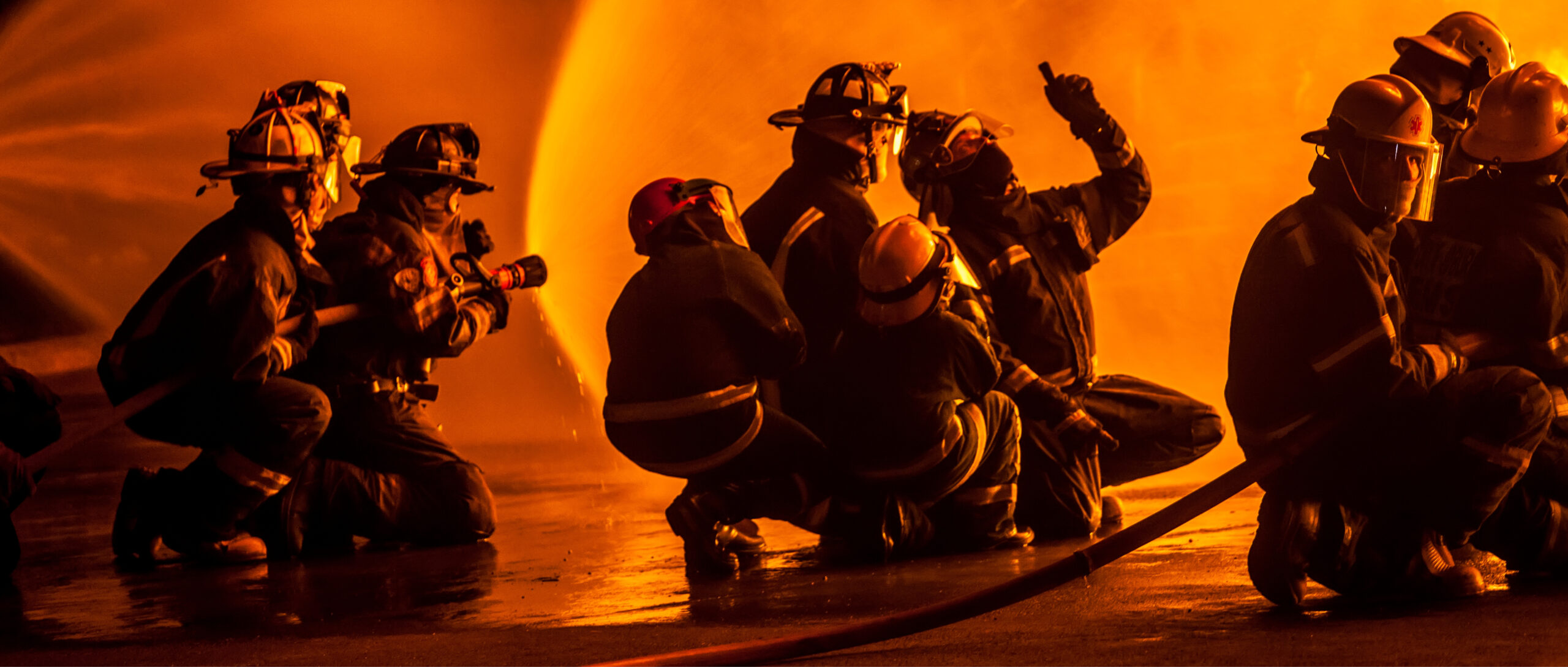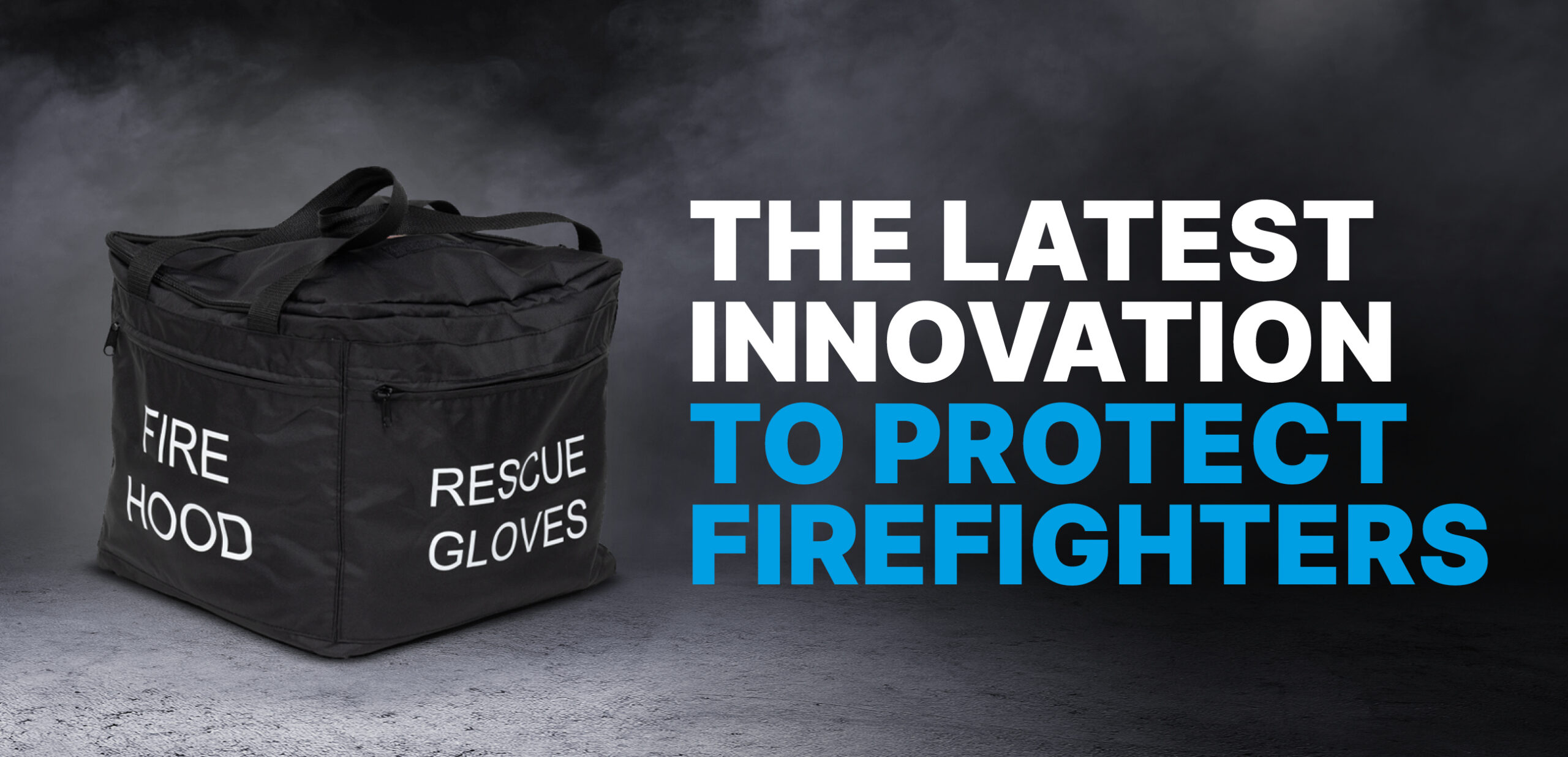The question of whether firefighters are exposed to harmful chemicals that are absorbed through the skin is no longer in any doubt. This absorption occurs despite firefighters wearing full turnout gear. Evidence shows that this exposure can lead to firefighters experiencing increased risks of cancer and other serious illnesses compared to the general population. In this article, we answer your questions about the chemical hazards a firefighter’s skin is typically exposed to and the types of fires that increase absorption.
What Are the Key Chemicals Firefighters Are Exposed to During a Fire?
Chemical hazards that firefighters are exposed to include, but are not limited to:
- Polycyclic Aromatic Hydrocarbons (PAHs) – PAHs comprise over one hundred chemicals, seventeen of which are known to cause major health problems in humans, including bladder, skin, lung, and gastrointestinal disease.
- Naphthalene and Benzine – Naphthalene, the most volatile PAH, can penetrate the protective barriers of turnout gear more readily than less volatile PAHs. Benzene is also a highly volatile chemical that can penetrate turnout gear.
- Polyfluoroalkyl substances (PFAS) – PFAS are one of the major classes of carcinogenic chemicals that firefighters are exposed to at both the fire scene and fire station. Elevated levels of PFAS have been noted in firefighters’ blood serum in recent studies. Possible sources of occupational exposure to PFAS include turnout gear, aqueous film-forming foam, air and dust.
Are Firefighters Exposed to Chemical Hazards in House Fires?
House fires can be particularly dangerous when it comes to chemical hazards due to factors such as the chemicals contained in furniture, plastics, and wood. PAHs can be released during incomplete combustion of such materials. Volatile Organic Compounds (VOCs) also present serious dangers. VOCs vaporise at room temperature and are commonly found in household products such as paints, solvents, and cleaning agents. These compounds can be released into the air and absorbed through the skin during a fire. Long-term exposure to VOCs has been associated with respiratory problems, neurological impairment, and other health issues.
Heavy metals such as lead, cadmium, and mercury from various sources, including lead-based paints, electronic devices, and batteries, can also be released in a house fire. Leading to the metals being absorbed through the skin. This can result in neurological damage, and kidney and liver harm. Chlorine gas can be released from burning materials containing PVC (polyvinyl chloride), such as plastic pipes, vinyl flooring, or electrical wiring. Chlorine gas is highly irritating to the skin and eyes.
Finally, there is exposure to Formaldehyde and Hydrogen Cyanide gas, which can both be released into the air during a fire and absorbed through the skin. Formaldehyde exposure has been linked to respiratory irritation, skin allergies, and cancer. Exposure to hydrogen cyanide can occur through inhalation and skin contact and can lead to symptoms such as headache, dizziness, respiratory distress, and even death.
What Are the Worst Types of Fires for Chemical Hazards?
The worst types of fires for chemical hazards are those involving the combustion of materials that release highly toxic substances or produce particularly harmful byproducts. These include:
- Although rare, electric vehicle fires can result in the release of over 100 organic chemicals due to the intense heat caused by the burning of the Lithium-ion battery.
- Fires involving plastics, synthetic materials, and other hydrocarbon-based substances can release toxic gases such as carbon monoxide, hydrogen cyanide, and VOCs. These materials often burn at high temperatures and produce dense, black smoke which contains hazardous chemicals that can be absorbed through the skin.
- Industrial fires in chemical plants, warehouses storing hazardous materials, or facilities handling toxic substances pose significant chemical hazards. These fires may involve the combustion of highly reactive chemicals, corrosive materials, or substances with acute poisonous properties.
- Fires involving electrical equipment or wiring can release toxic gases and substances, including polychlorinated biphenyls (PCBs) found in older electrical equipment and heavy metals from electronic components. Combining heat and electrical arcing can generate hazardous byproducts, increasing chemical-related dangers.
- Fires involving hazardous waste materials, such as those in landfills, storage facilities, or illegal waste disposal sites, can release a complex mixture of toxic substances, including heavy metals, pesticides, industrial chemicals, and solvents.
- Fires in older buildings constructed with materials containing asbestos, lead-based paints, or other dangerous substances can release toxic chemicals into the air and produce dust, soot, and debris that can penetrate the skin.
- Wildfires are fully carbonaceous fires and often produce complete combustion due to extremely high heat. Wildfires emit large amounts of black carbon and light-absorbing organic carbon, known as brown carbon, into the atmosphere. In addition to the chemicals produced by the fire itself, fire retardants that are often dropped from the air to control wildfires, contain chemicals that can be hazardous to first responders.
How Can Firefighters Protect Themselves from Exposing Their Skin to Hazardous Chemicals?
Firefighters must take substantial measures to safeguard themselves from contamination. Enduro Protect presents a durable, cost-efficient, and comfortable solution to ensure the long-term well-being of firefighters worldwide. Moreover, firefighters utilising Enduro Protect base layers demonstrate no statistically higher likelihood of cancer diagnosis compared to the general population.
One area of particular vulnerability highlighted in studies on firefighters’ chemical exposure is the neck region. This has been one of the key considerations in the design and development of our own protective flash hoods. The Enduro Protect Flash Hood has a unique design, featuring an ergonomic cut with an extended attached ‘pelerine’. This is the extra material which extends out from the neck across the top-half of the shoulders and chest. The pelerine is tucked under jacket or other protective wear providing perfect protection with no seams exposed. This ensures the highest levels of filtration of chemicals and other hazardous substances. Created from submicron-sized fibres, the material technology of the flash hood forms a protective shield that filters out 99.7% of toxic microparticles, aiding in the prevention of cancer among firefighters. Crucially, it fully covers the head and neck, providing protection against PFASs and PAHs.
The Enduro Protect Ensemble recently underwent independent testing by Professor Robert Chilcott and the University of Hertfordshire’s Toxicology Research Group. This evaluation assessed the protective capacity of the undergarment ensemble (R52R and R045N) worn by a robot in a smoke chamber contaminated with carbonaceous (soot) particles. During the trial, no turnout gear was worn over the baselayer, exposing it entirely to the elements.
The test results exhibited a statistically notable reduction in aerosol penetration throughout the one-hour exposure duration. By adopting the Enduro Protect Baselayer ensemble as a primary preventive measure, firefighters automatically provide themselves and extra shield from harm in all scenarios, substantially reducing the health consequences of long-term exposure to fire-induced chemical hazards.
To discuss any points made in this article, please call the Enduro Protect team on 01235 814112 or email us via [email protected]











